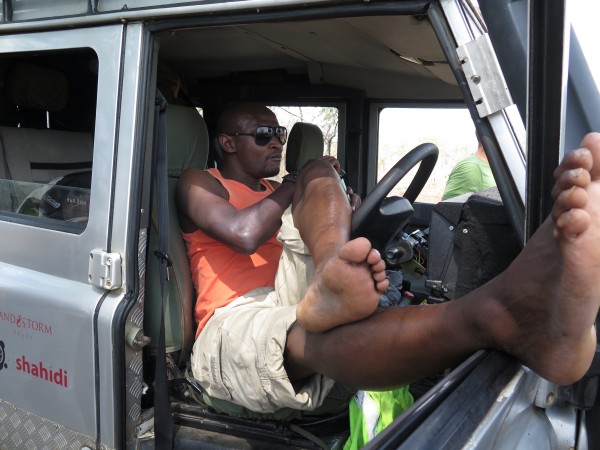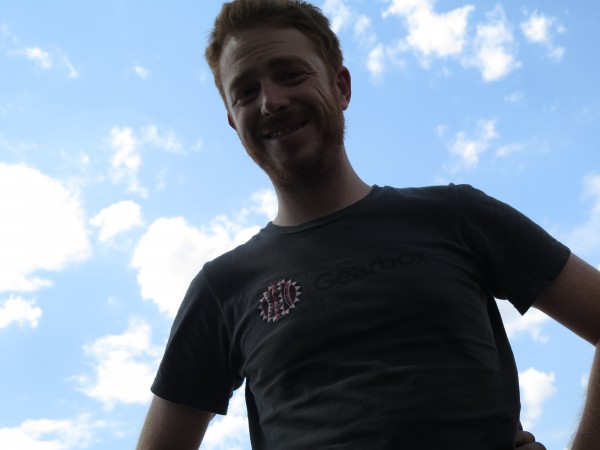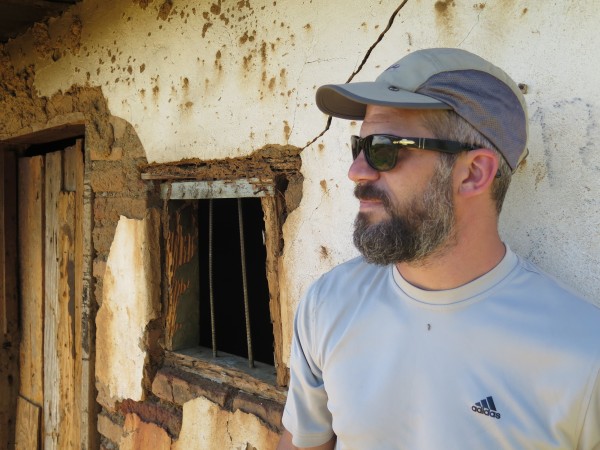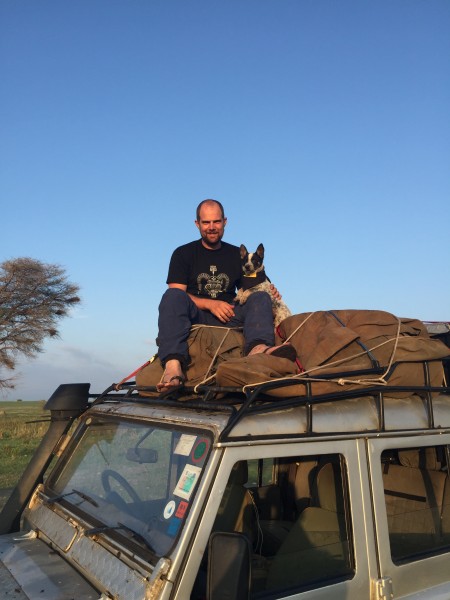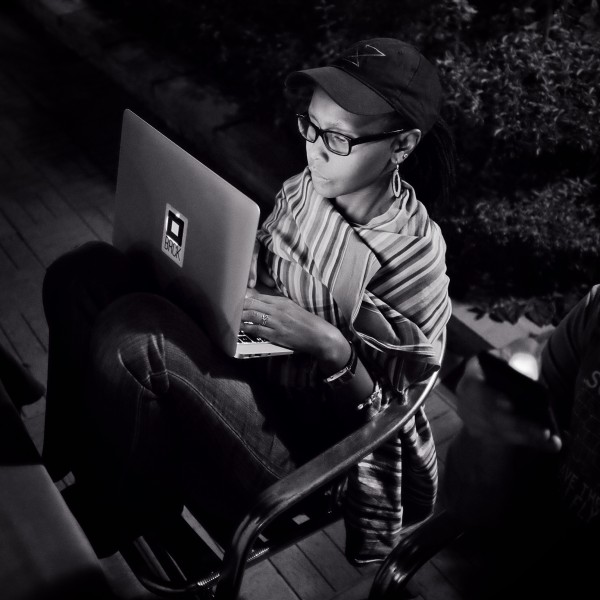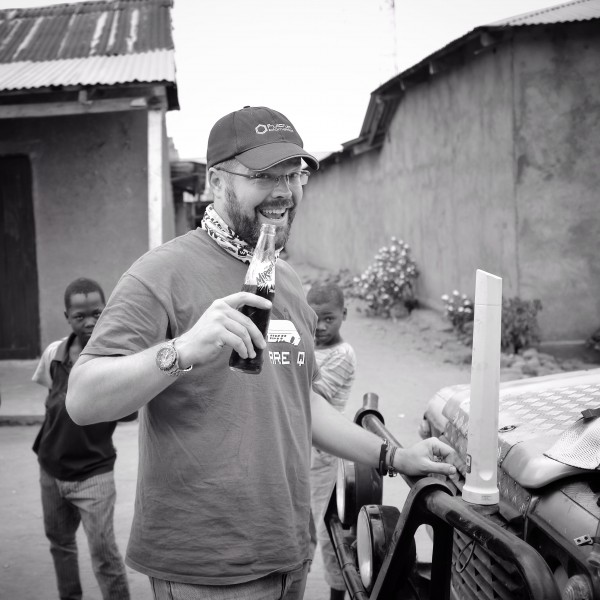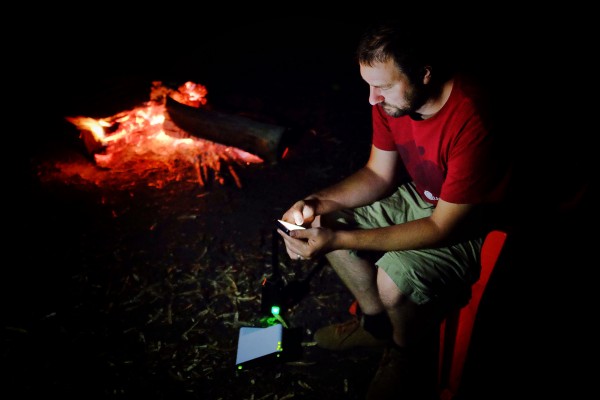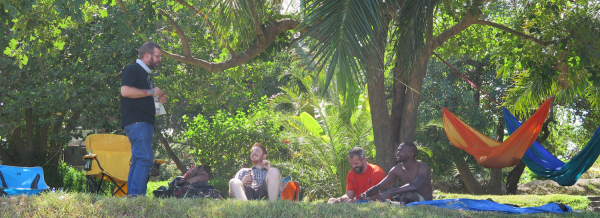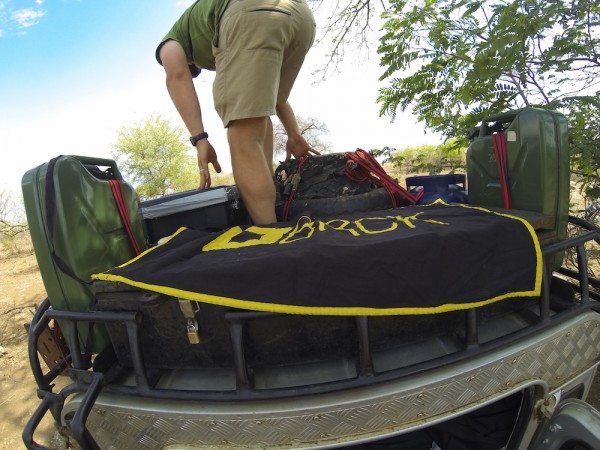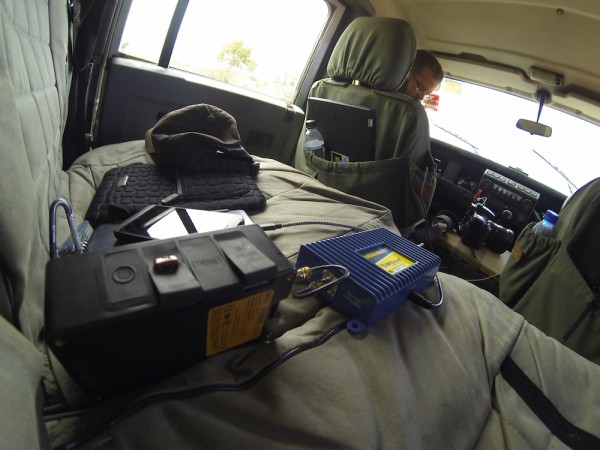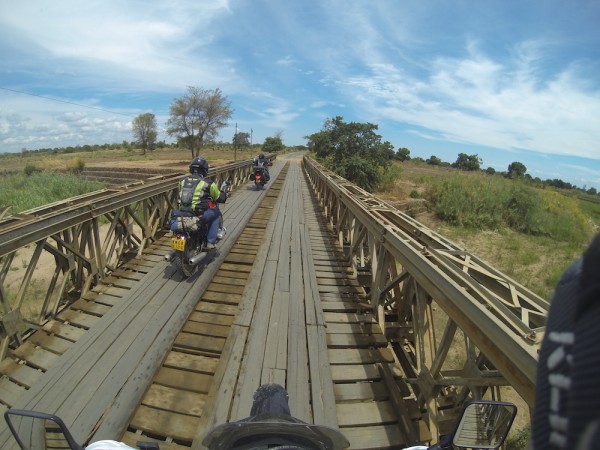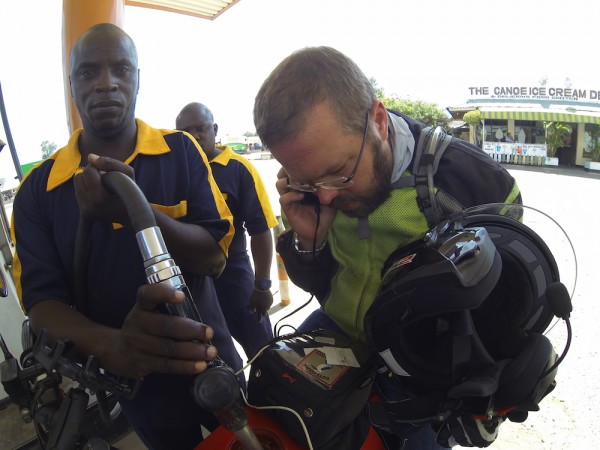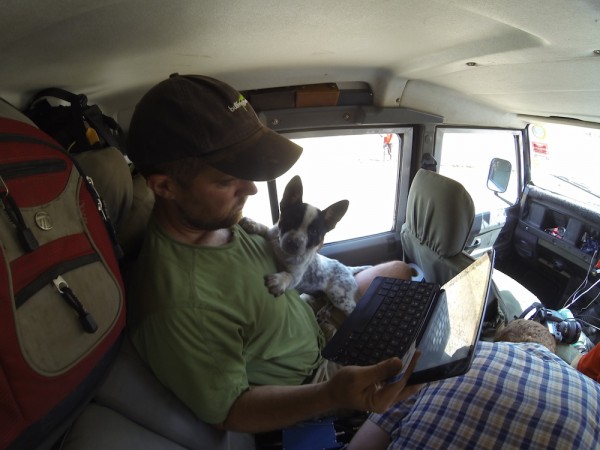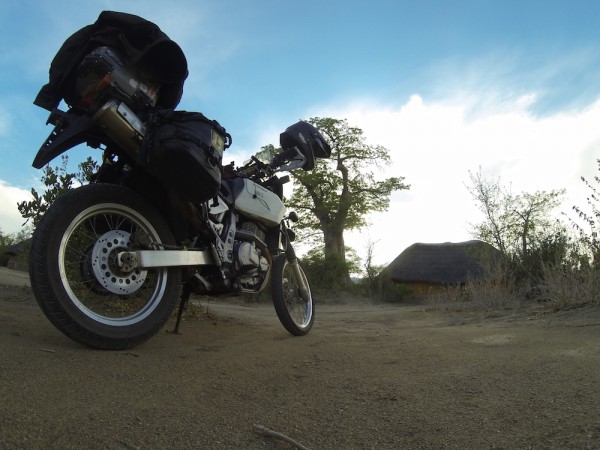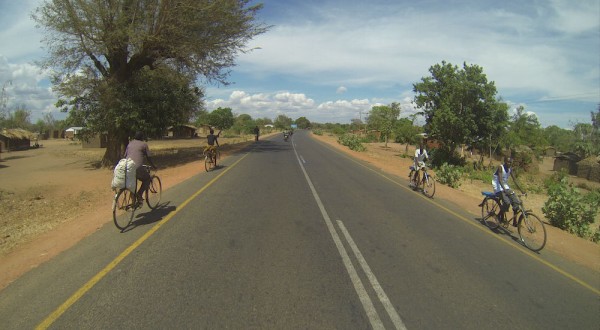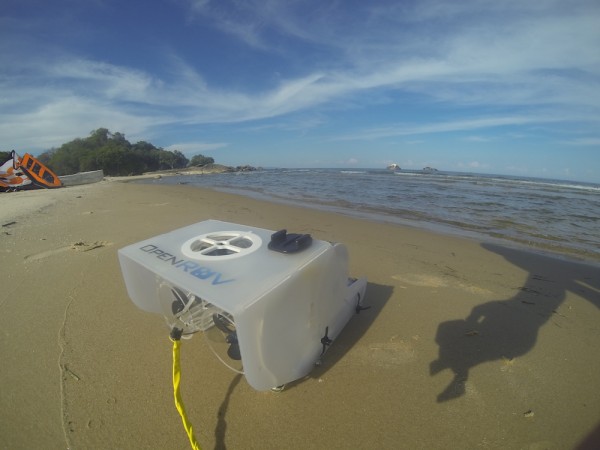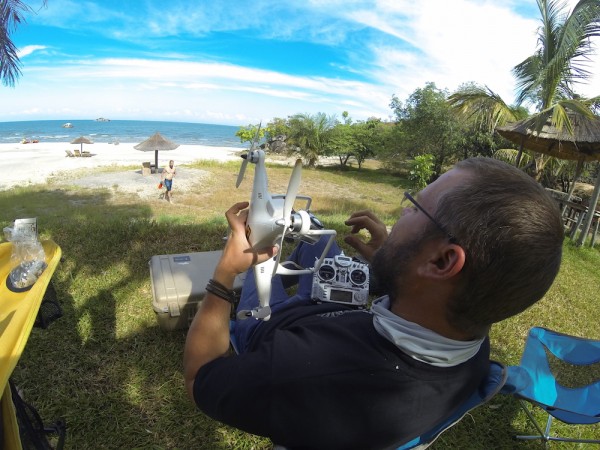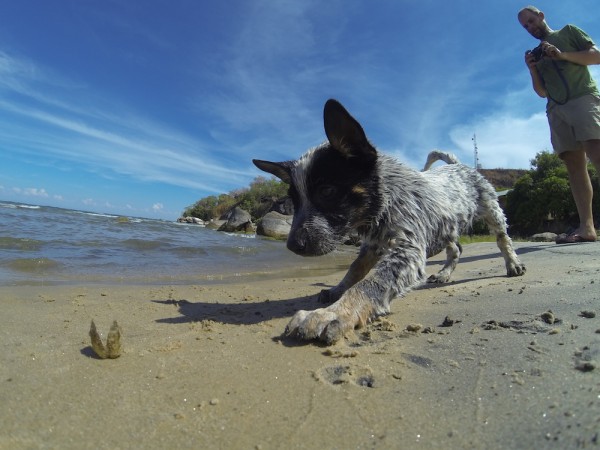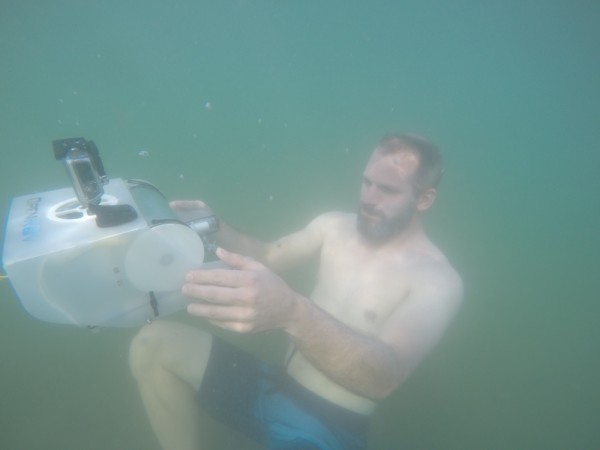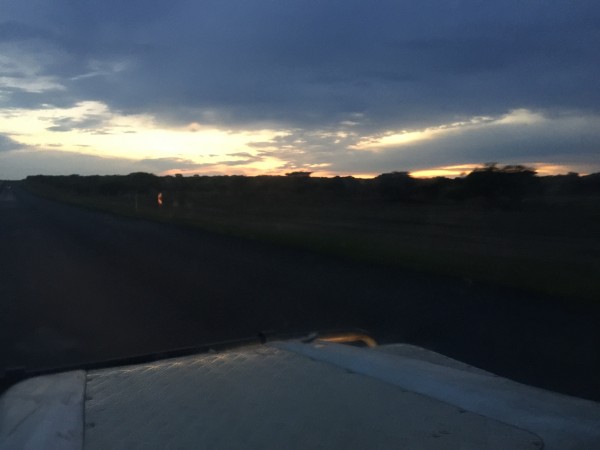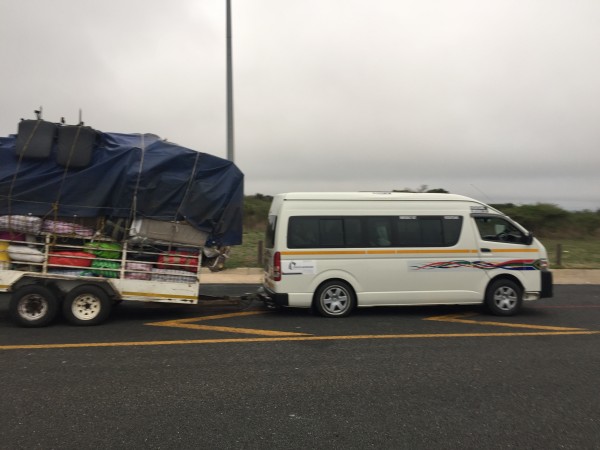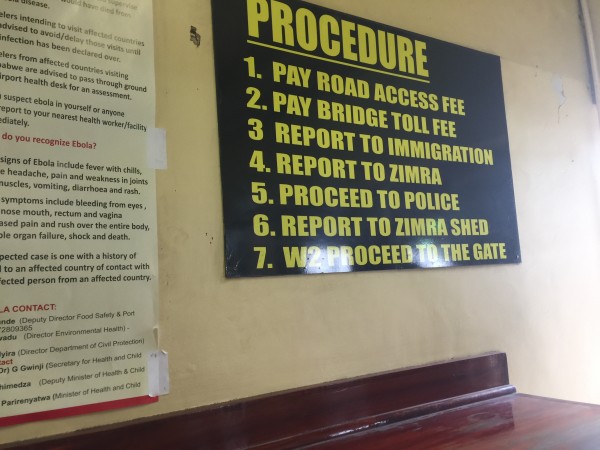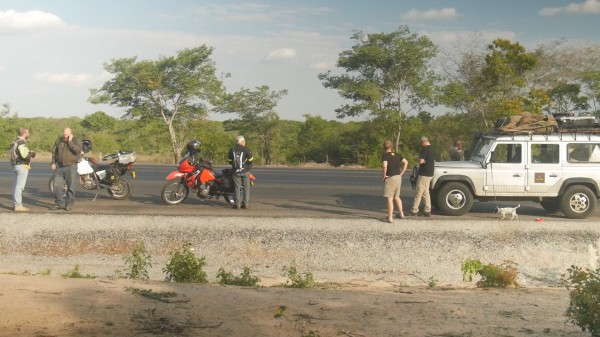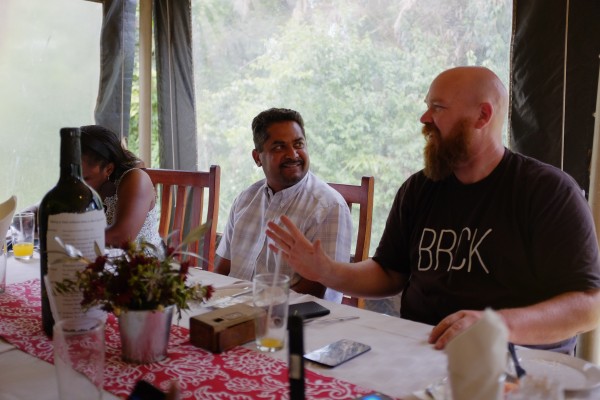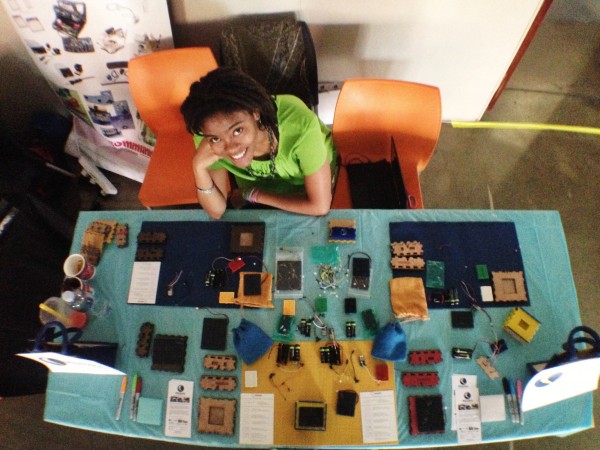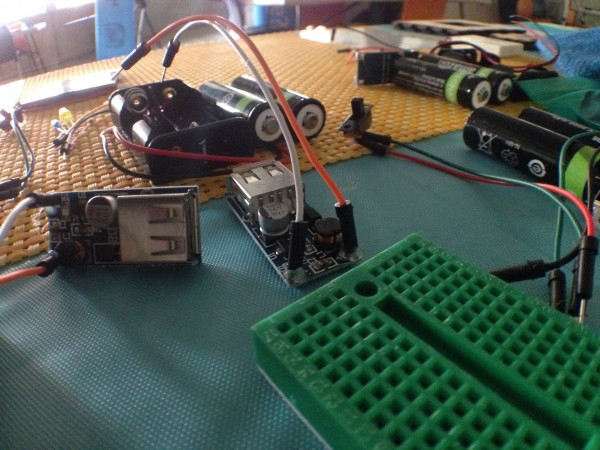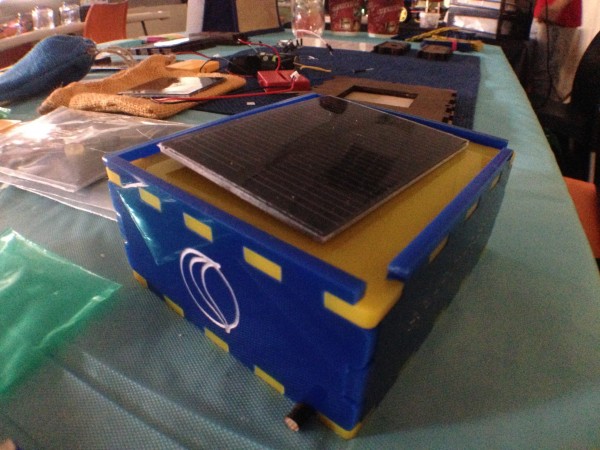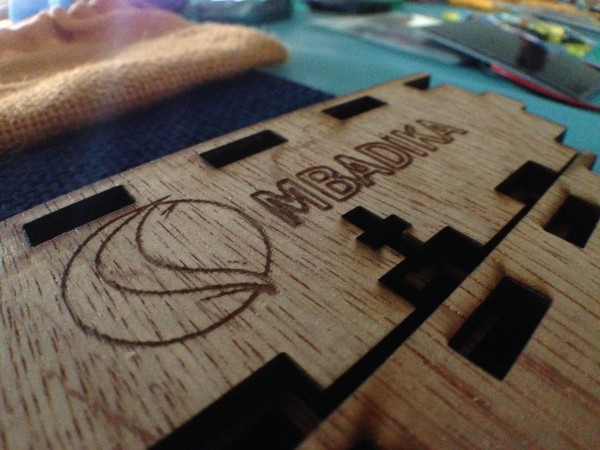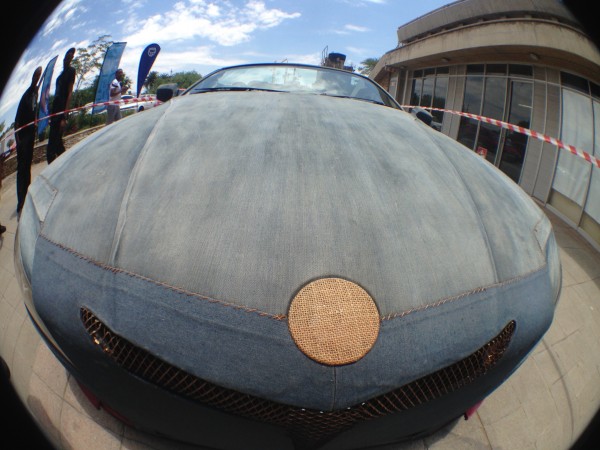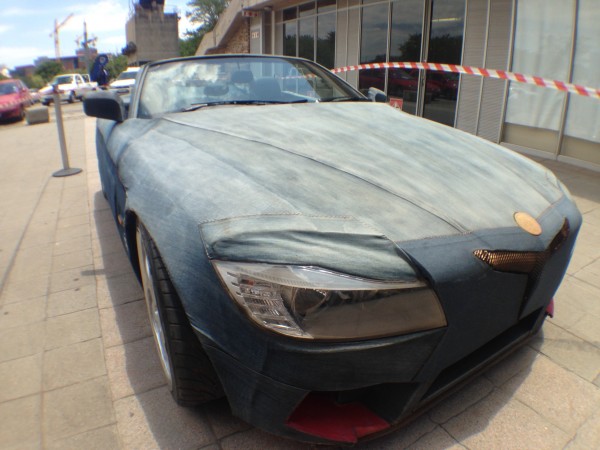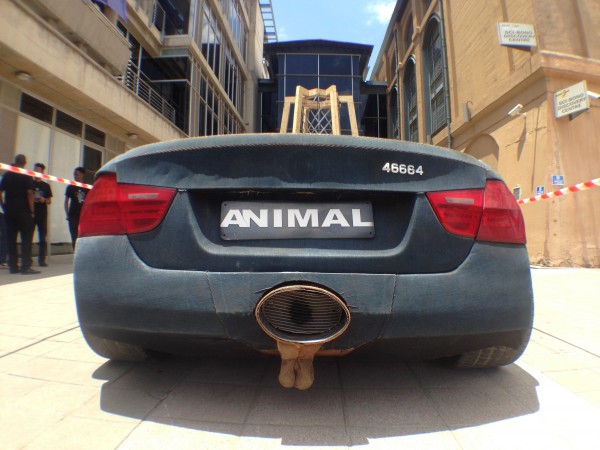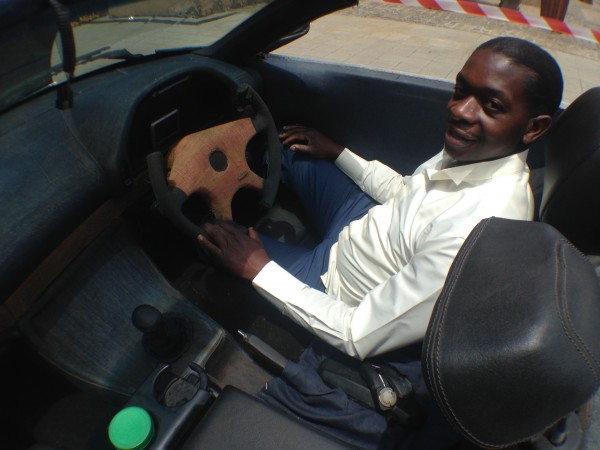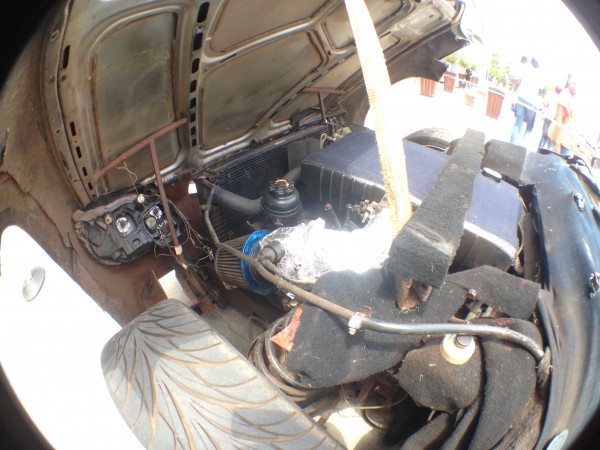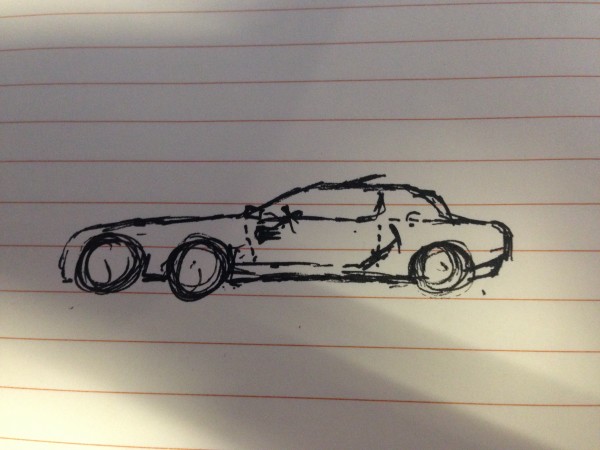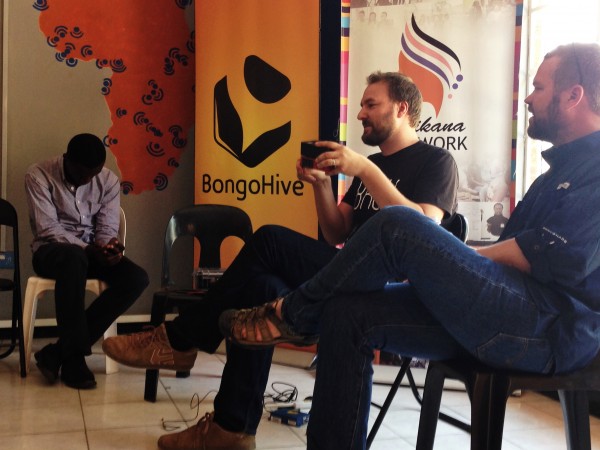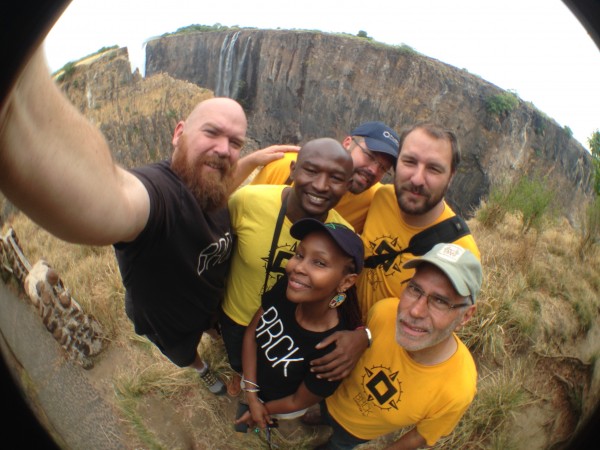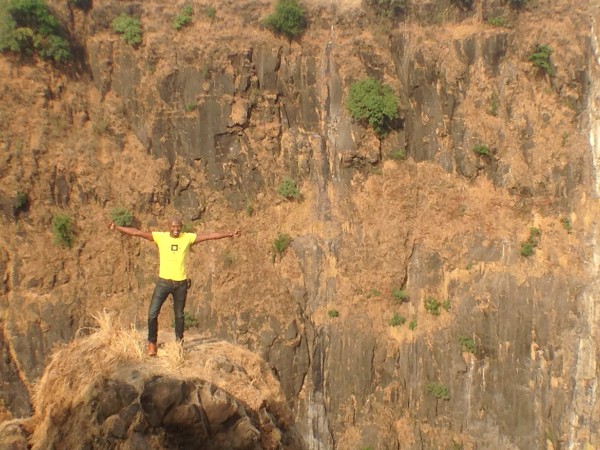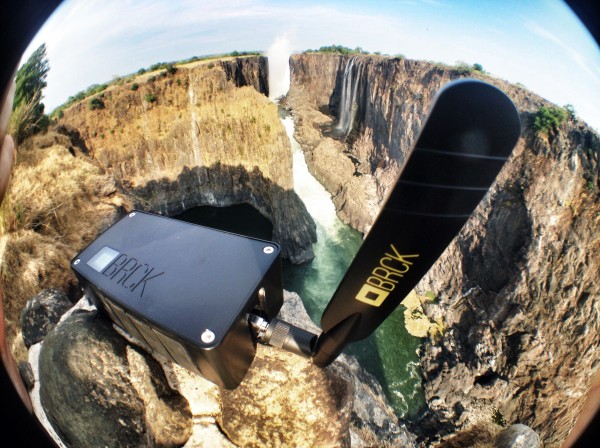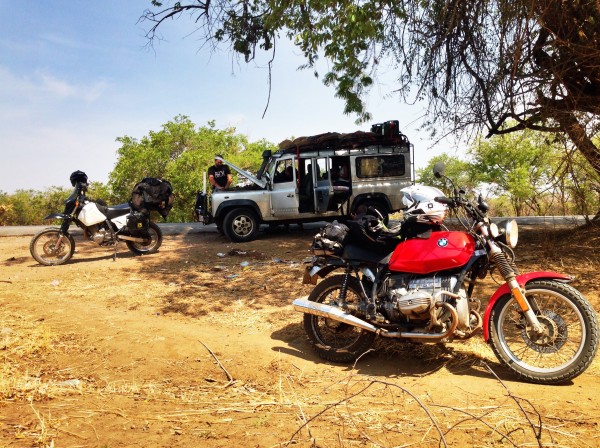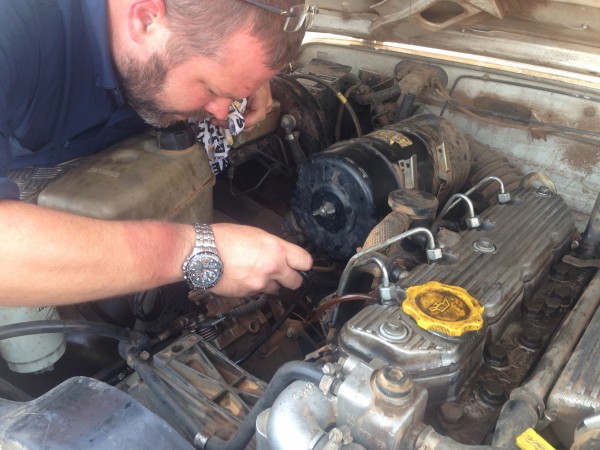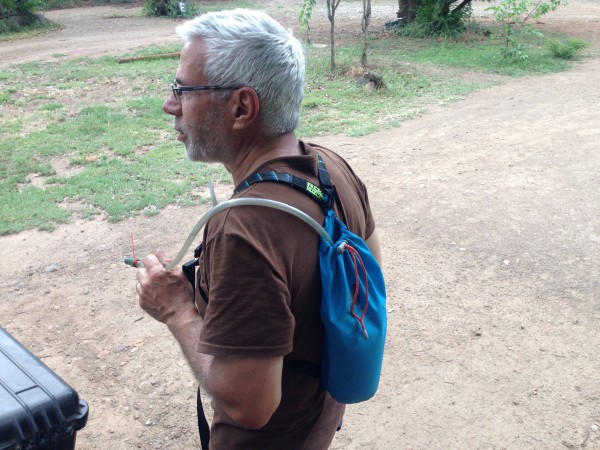Github created a list of the open source software products based in Africa
WhiteAfrican
Where Africa and Technology Collide!
Category: Africa (page 2 of 76)
The Tony Elumelu Foundation has set an ambitious goal, “…to create 1 million jobs and $10 billion in annual revenue in Africa.”
They are choosing 1,000 entrepreneurs from across Africa to be a part of the new TEEP program, and they plan to do 1,000 more each year for 10 years – that’s 10,000 entrepreneurs total. Not a small number. If you do the math, this works out to $10,000 per entrepreneur, so it can’t be about funding as much as it is about learning.
Applications open today (Jan 1, 2015), it’s 87 questions long so make sure to read up and apply right away. (Hint: read their TEEP blog to know how they think)
Not enough successful African entrepreneurs are using their money to invest in other younger entrepreneurs. Those that do tend to be greedy with the percentage they ask for, so many entrepreneurs look to capital from the US and EU to use to grow their companies.
However, this could all be changing, if this program works and sends a message to other African high net worth individuals. This is one of the strongest moves by any African to invest back into other newer/younger African entrepreneurs, if not the strongest. Tony Elumelu has always been at the forefront of giving to the next generation, so it’s not a surprise that he leads on this as well.
The Rules
(full terms and conditions):
- Open to citizens and legal residents of all 54 African countries, 18 years and above.
- Applications can be made by any for-profit business based in Africa in existence for less than three years, including new business ideas.
- Applicants can only submit one business.
Selection Criteria
Since most people won’t actually read the full terms and conditions, I’ve done some scanning and pulled out some important elements. Here’s how you will be scored by the selection committee:
- Feasibility: content of the business idea. A good business model that has clear and compelling mission to grow a sustainable, commercially viable business and is effectively communicated (25 points);
- Market Potential: knowledge and understanding of the market, customers and competitors for their idea/business (20 points);
- Financial Model: understanding of the basic financial requirements of running a business, costs and revenues. (20 points);
- Scalability: Demonstrates potential for replication and growth of their product or service to create jobs and wealth (10 points);
- Leadership Potential and Entrepreneurial Skills: Applicant has demonstrated leadership potential, capable of attracting people, customers and resources. Also exhibits strong passion and commitment for the business (25 points).
The Program
Digging a little deeper into the terms and conditions doc (see Section 9), and the program unfolds a bit more. It looks like there is $5000 set aside for each entrepreneurs part in the program, and another $5000 as a direct amount injected into their business. Finally, if you do your 3 reports and take part in all of your mentorship sessions, then another returnable $5000 can be given to you.
There seems to be three main parts to the program:
- Online – 12-week online skills learning assignments.
- Mentoring, where we are assured, “The Mentors are required to sign a non-disclosure agreement as it relates to personal information which may come into their possession during the Programe and are committed to maintaining the highest ethical standards when mentoring.”
- 3-day boot camp and Elumelu Entrepreneurship Forum – where you are physically in Nigeria (costs for travel/lodging are covered by the program, which is where that initial $5000 goes).
In Conclusion
My thinking is that they’re going a bit broad on this. After what I’ve seen within the iHub community and as a partner in the Savannah Fund, I’m not sure that $10k is enough. It would have made more sense for me to see them go with 100 entrepreneurs a year, where each has a chance at $100,000. However, if any organization is going to make it work, I believe the Tony Elumelu Foundation can.
My guess is that they are going to focus on smaller, very early stage startups that largely aren’t tech related. A leg-up of $5,000 to a single guy trying to start a small business outside of a major city can go far with that amount.
Which tech companies were funded in Kenya in 2014? I thought I’d compile a list of the ones I know of.
Send me any that I might have missed.
Early stage capital
Angani – Public cloud computing provider
BRCK – Rugged, wireless WiFi device
CardPlanet – Mobile money payment system aimed at business and NGOs
iProcure – Software for optimizing rural supply chains
OkHi – Physical addressing system for logistics solutions
Sendy – Motorcycle delivery service
Tumakaro – Diaspora driven education funding
Umati Capital – Factoring for farmer cooperatives, traders and processors
GoFinance – Working capital finance to distributors of FMCGs
BuyMore – Electronic student discount card
TotoHealth – SMS technology for children’s health
BitPesa – Bitcoin for African remittances
Sokonect – Mobile agriculture tool to eliminate brokers
BookNow – Buy bus tickets online in East Africa
Mdundo – African music on your phone
Futaa – Source for football news in Kenya
Movas – Global provider of B2B/B2C m-Commerce solutions
Hivisasa – A free, county-level online newspaper
Yum – Online ordering and food delivery service in Kenya
Akengo – Learning management system
EcoZoom – Hardware. Clean burning, portable wood and charcoal powered cookstoves
Jooist – A gaming network for mobile phones
Globa.li – A platform to connect hotels and distributors for bookings
Growth capital
MKopa – solar power financing using mobile money
BuyRentKenya – Real estate classifieds
Wave – US-to-Kenya remittance provider
Eneza Education – Mobile tutor and teacher’s assistant
Sanergy – hardware tech, building solutions for urban toilets and composting
Bridge International – Education in low-income environments, uses tech to send teaching content
Soko – Handmade jewelry and accessories shopping from East Africa
EatOut – Find and book seats in East African restaurants
Exited/Acquired
M-Ledger (by Safaricom) – Monitor your Mpesa transactions
Wezatele – Mobility solutions in commerce, supply chain, distribution and mobile payment integration
A special thanks to John Kieti, Rebecca Wanjiku, Nikolai Barnwell, and Ben Lyon for refreshing my memory!
I’m (finally) playing around with updating my blog theme and layout for easier posting of images and asides. Standby today as this goes through some iterations.
I just wrote a post on the BRCK blog upon returning from our 9,000km jaunt from Nairobi to Johannesburg and back. What I didn’t cover there is that most of the fun in these trips is mixed in with the people you go with, and the list of characters who were a part of this trip was amazing.
Before we left Nairobi, 2 weeks ago, I though that a 500km day on a motorcycle was a long time. Now I just ask, “well, what will we do in the afternoon then?”
We left Harare, where the Arensen’s had hosted us for two nights in their lovely home, for a bit of a long day. We were gambling that we could make it through the Zimbabwe-Mozambique border AND then the Mozambique-Malawi border in good enough time to get to a campsite by the end of the day. A quick breakfast of chai, coffee and pre-boiled eggs underneath a baobab tree saw us to the first border in good time.
The Douane border crossing is less busy than it’s Beit Bridge counterpart. Leaving Zimbabwe, the customs and immigration officials are efficient and helpful. Getting into Mozambique was equally problem-free, especially since we had all gone to get our visas already.
Now, Mozambique, this part of it anyway where you shoot across the Tete corridor towards Malawi, is a hot, dry and barren land. The only thing of any note is the nice bridge you cross over the Limpopo river passing through the city of Tete. Besides that, I’d suggest it’s not a place you want to spend any time.
Two interesting things happen as you run to the Malawi border. First, you realize that you cross back and forth between the two countries a couple times on the way. Second, when you pass through the Mozambique side of the border you’re still 5km from the Malawi border crossing. Strange… but, again border crossings are not about security, they’re about revenue generation.
The Mozambique customs officials had clearly never seen a Carnet de Passage (it’s like a passport for your vehicle), so they acted like it was something they couldn’t stamp. We were able to convince them that it was something normal, and that their colleague at the previous border had stamped it, so they could as well. Stamped and moving, we shot off for the campground, as we saw a storm rolling in.
It was at this time that our small team mascot, Lobo the Australian cattle dog puppy, decided to have an explosive experience inside of the vehicle. Many curses were heard as people sprayed themselves down, and cleaned out the dog’s carrier. Praying for a dry night, we took off a bit behind schedule, and still managed to roll into Bushman’s Baobabs (great place), and had a warm still night of sleep.
500km up Lake Malawi
Off early, as always, we were half-way to our destination by 9:30am and got to camp by just after noon. As an aside, I think the word “Malawi”, and the flag symbol, all are pointed at the meaning of “land of the bicycle”. We saw so many people on bicycles today, more than in any other country we’ve been to.
Makuzi Beach area of Lake Malawi is beautiful, and having a full afternoon ahead of us was something we didn’t know quite what to do with. So, of course we broke out the drone and OpenROV to have some fun.
We got some shots.
Philip managed to crash the drone into the lake, so we’re trying to see if we can resurrect it. (Update: we dried it out all night and now it’s working again. DJI makes an amazingly hardy device)
We had a grand idea of Paul driving the OpenROV underwater vehicle under a rock and taking a video of someone jumping into the water. We kind of did that, the problem was the cable was a bit short. The other problem was that it cut my toe with a blade as it came up directly underneath me. The good thing is that we had a lot of fun trying and leaned some of the limits of the vehicle.
There is now a beautiful, slow moonrise happening at 9pm, over Lake Malawi. We’re all well, fat and happy. The bikes and Land Rover have been behaving well. We’re set for our early AM departure as we have 750 kilometers and a border crossing to go through.
We made it into Harare, Zimbabwe last night after a long 17-hours traveling. Due to the rainstorm in South Africa we were forced to sleep 230km from the Beit Bridge border crossing, well shy of the 30km we had planned. The wind was blowing and gusting so hard we were forced to ride at odd angles. Eventually we were forced to call it and went to find a place to sleep by 11:30pm.
A 4am wake-up and we were traveling and at the border by 7:30am the next morning.
Beit Bridge Border
Beit Bridge border crossing is something of a legend, where you’re usual transit time is 3-5 hours, but can take up to 7-8 if you’re unlucky. The SA side was fine, taking only 20 minutes or so. We then spent the next 3 hours going through the ridiculously disorganized and obtuse Zimbabwe side, until finally we popped free.
Border crossings in Africa make you realize that they’re about revenue generation, not security.
Zimbabwe has thin but good roads, and many (15+) police checks and radar guns along the way to Harare. They really do try to stop you We got in at 9:30pm and slept almost immediately.
Hypercube and the Zim Tech Community
Today we spend with the tech community here, with leaders from the different tech hubs in Bulawayo as well as Harare.
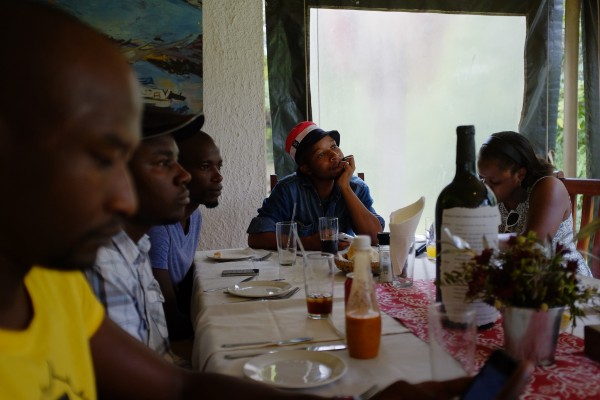
The Tech Hubs:
@HypercubeHub
@myarea46
@MuzindaHub
@emergingideas
@Neolabtech (Bulawayo)
The most advanced one seems to be Hypercube, which has an amazing house that has been converted into a nice space. They hosted an event where I talked at length about building tech communities, startup thoughts, and what we’ve learned about building hardware through the BRCK experience.
Overall, I really like Zimbabwe and the tech community seems to have their heads and hearts in the right place. They’re working together to try to make something out of a hard situation, they’re hungry and they’re bright.
Zimbabwe has the core infrastructure necessary for real growth, and with a few changes in the business climate here I think they’re ready to take off. With their current drive and strong foundation, I think they’ve got a bright future ahead.
I met Netia McCray at Maker Fair Africa yesterday. She’s an MIT grad who’s working on a project called Mbadika (it means “idea” in the North Angolan language of Kimbundu), which is about teaching kids the basics of electronic prototyping. She does this using some very inexpensive solar-charging kits, designed to be put together and understood in an educational workshop, or on their own.
Mbadika is a new program, so they’re just getting off the ground themselves, however they’ve already taught 250+ kids in 6 countries.
As a father, I can appreciate the simplicity of this kit, having worked through some more complicated electrical engineering kits with my own children. There’s value in having something that is immediately buildable by a 10 year old that they can put to use right away. They can design/paint it how they like and make it their own.
You can help them out on the new South African crowdfunding site, ThundaFund.
One of the most ambitions items at Maker Faire Africa this year in Johannesburg, South Africa is Samuel Ngobeni’s “art car”. He’s a designer from Germinston, who has spent the last three years building his ANIMAL car, from the ground up, that means the frame and all. It’s a work in progress, though starting in 2011, it’s not quite done yet.
The first thing you’ll notice about it is that it’s completely covered in denim. When I asked him why, he said, “because it’s tough and can withstand a lot of things like the sun and rain, like the cowboys, that’s why I chose it.”
At first glance, from afar, it looks a bit like a BMW shape, but when you get close you can tell just how much customization and work went into it. Then, when he opens the hood and shows you underneath, you can see that he actually hand-built the whole thing with steel piping and sheet metal, by hand.
It’s running a 3 liter, straight 6 cylinder engine, has suicide doors and leather seats.
Samuel’s next big idea is to find a v8 or v12 engine, slap that inside a custom built 6-wheel vehicle (4 in front, 2 in back) and then skin it all in croc-skin. His denim ANIMAL is already pretty slick, so his next car can only get better, and it sounds like it’ll be a lot more powerful and meaner too!
How You Can Help
It’s difficult for designers like Samuel to get far on their own. He’s looking for someone who can take him to the next level. We’re setting up an email address for him now, but you can reach him on WhatsApp at 0822 110122 for now.
TL;DR – We’re chilling by Victoria Falls today, a 5-hour drive took us 11-hours yesterday, and someone stole our med kit, a vest and 300m Nikon lens in Livingstone today.
Friday was amazing. We had gotten in the night before to Lusaka, and this meant we got to spend the whole day with the BongoHive team and the rest of the tech community here. They were some of the most hospitable people, and we gave demos/talks on the BRCK, as well as Mark giving a talk on User Experience (UX), which was one of the best talks I’ve heard in a long time. Later, I gave a talk on Savannah Fund and raising investment money for startups, and the whole evening was finished by Juliana and myself giving a joint keynote to get the local Startup Weekend going. Busy, and fun!
It’s interesting, with Lusaka being a smaller, though major African city, they have the ambitions of larger things. However, their issues become more challenging than people who live in some of the larger cities like Lagos, Cape Town or Nairobi, since there isn’t the critical mass of things like investors, customers or talent. It seems like the strategy to build a big company is that you have to move across borders and anchor off of a larger region more quickly.
A Day Off on the at Vic Falls
Today I’m sitting in a camp on the edge of a tributary to the Zambezi river, a couple kilometers from Victoria Falls. The rains have been late here, so everything is dry, including the falls themselves – they’re still epic, but not nearly the same as the real falls. We went out there this morning to get a few pictures, and were able to get the BRCK connected from “Danger Point”.
Today is mostly about rest. We’re doing a bit of testing, connecting the BRCK to the vehicle mounted Poynting antenna, and then amplifying that with a Wilson booster, which successfully turns a non-existent signal on a mobile phone into a 19 (with antenna) and then a 61 (with amp + antenna). It’s great to have a device like this where we can get such great connectivity wherever we go.
Mark has begun his lessons on how to ride a motorcycle today. He’s been busy putting around the campsite this afternoon with a big fat grin on his face. 🙂
Mark Kamau learns to ride a bike at Victoria Falls from WhiteAfrican on Vimeo.
The Road to Livingston
We had an interesting day yesterday, with a plan for a 5-6 hour ride from Lusaka to Livingstone. It turned into an 11-hour drive though, since the Land Rover had some issues with air in the fuel line. For a while, we could only go 20km at a time before it would stop and we’d have to bleed it. Luckily Philip really knows his way around a diesel engine, we worked through all the obvious issues and finally got it to go 100km before we had to bleed it again.
Last night Reg spent some time on it and though we think the fuel lift pump is the culprit (and weak), it’s working well enough to make the 500km run to Francistown, Botswana tomorrow.
Stinking Thieves
We thought Zambia was different. Mark accidentally left Juliana’s big Nikon camera at a restaurant in Lusaka. Mark wanted to go by and see if it was there, I was skeptical, it was lost forever. However, the next day our friend and TED Africa Fellow, Mulumba went by and they had found and kept it for us. Where were we? This doesn’t usually happen in a big African city…
Today, we had to run to pick up some food at the local Shoprite grocery store in Livingstone. We locked up the Land Rover and went in for 30 minutes or so. When we cam out we found everything sitting in the back seat was stolen, including a nice 300mm Nikon Lens, a riding vest, and most importantly of all, our amazing Med Kit. This med kit is put together by my wife, a nurse practitioner, and has some of the best expedition stuff you can find.
Oh, just found out that they got our Mozilla Firefox phone… this is a 3-SIM phone, and it’s what we used to top-up credit on SIM cards and figure things out along the way. What a shame.
We’re more than a bit pissed off about this, if I found the thieves there might be violence.
Pushing On and a Jua Kali hack
With the vehicle acting well all day today, the bikes tightened up and a chance to rest ourselves, we’re all set to hit the Botswana border in the morning and do a run down to Francistown. Reg had to head back to Kenya, so Mark will take over on the Land Rover, though we will miss having an engineer with us.
With Joel’s riding vest gone, we had no water for him. Fortunately, I carried an extra bladder. We put together a jua kali water pack for him using this, along with one of those small Alite chair bags, and a couple Rok straps (see below).
© 2024 WhiteAfrican
Theme by Anders Noren — Up ↑


